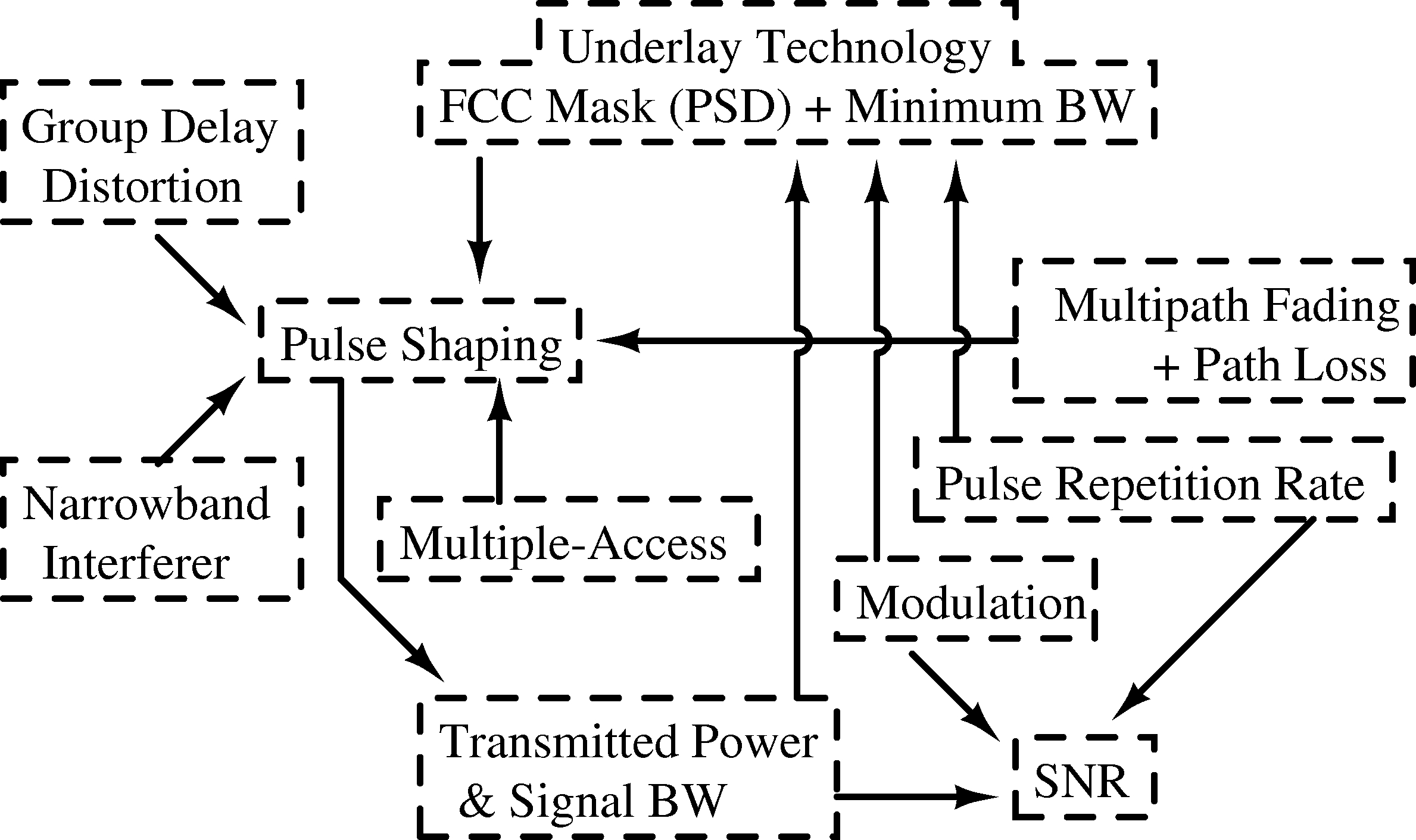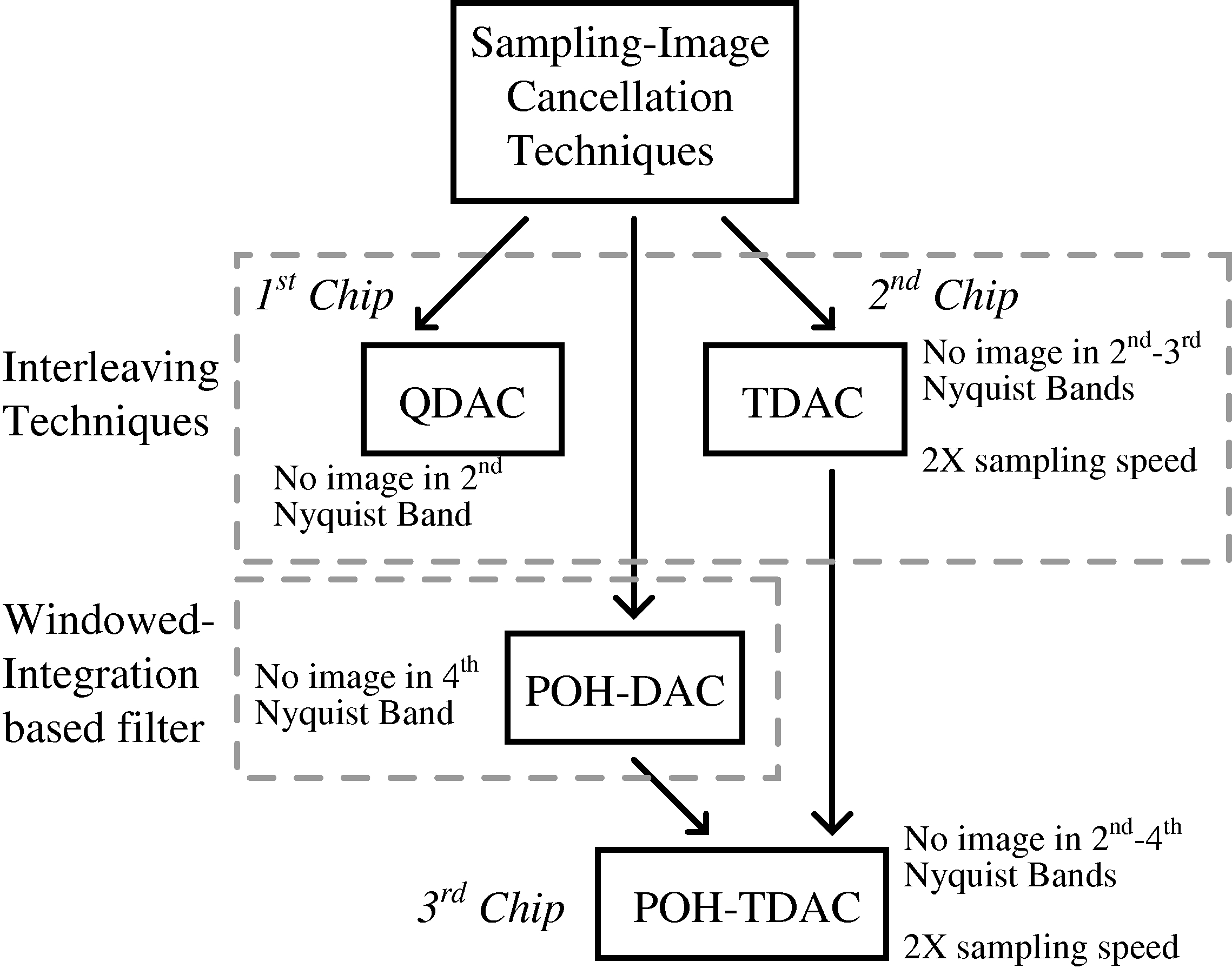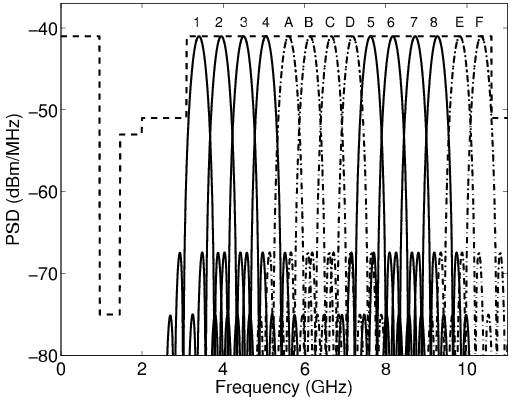|
[a]
 [b]
[b]

|
Ultra-Wideband (UWB) is an emerging wireless communication technology that was recently allowed unlicensed operation by the FCC in the 3.1-10.6 GHz frequency band [1]. FCC specifies a minimum signal bandwidth of 500 MHz or a fractional bandwidth of 0.2, whichever is less. The transmitted power is, however, constrained to be below the Part 15 limit (-41.25 dBm/MHz) for indoor unintentional radiation (see the FCC mask in Fig. 1(a)). For all practical purposes, this ensures that the UWB signals look like noise to the narrowband receivers already co-existing in the allocated band.
|
[a]
 [b]
[b]

|
Pulse-radios are wireless devices that communicate through short-duration, wide-bandwidth discontinuous signals (pulses). This work focused on digital pulse synthesis techniques. Challenges specific to UWB pulse radio design (Fig. 1(b)) were studied and new architecture based solutions were proposed [2]. Fig. 2(a) gives an overview of the techniques presented in this work. A frequency plan was also devised which utilized one fixed clock frequency and generated different 500 MHz wide pulses in the 3.1-10.6 GHz FCC band.
|
[a]
 [b]
[b]

|